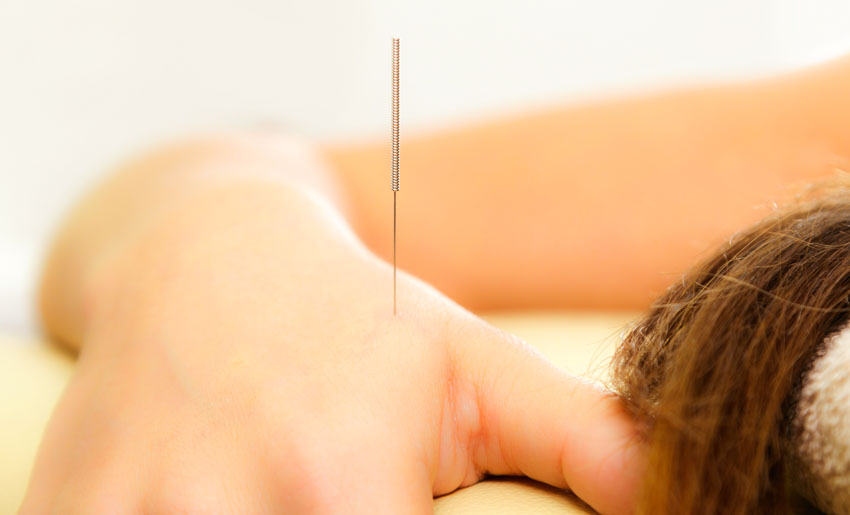
Acupuncture increases the efficacy of drug therapy for the treatment of sepsis due to pneumonia. Researchers from Guang'anmen Hospital of China Academy of Chinese Medical Science combined electroacupuncture with drug therapy. Patients receiving both drug therapy and electroacupuncture had superior patient outcomes compared with patients receiving drug monotherapy. The researchers conclude that the addition of acupuncture to a drug treatment regimen increases the total effective rate, assists in the regulation of immune system functions, increases anti-febrile actions, and alleviates inflammatory reactions.
The implications of this investigation are that an integrative medicine approach to infectious disease has the potential to save lives. The World Health Organization (WHO) notes that sepsis “affects more than 30 million people worldwide every year, potentially leading to 6 million deaths.” [2]
Guang'anmen Hospital researchers (Wang et al.) used the following study design. A total of 120 patients with pneumonia-induced sepsis were treated and evaluated in this study. They were randomly divided into an acupuncture treatment group and a control group, with 60 patients in each group. For control group patients, routine care (pain and fever-reducing drugs, water-electrolyte management, nutritional support) and anti-infective drugs were administered. The treatment group received acupuncture in addition to the same drug treatment regimen administered to the drug control group.
The statistical breakdown for each randomized group was as follows. The treatment group was comprised of 34 males and 26 females. The average age in the control group was 56.1 years. The control group was comprised of 32 males and 28 females. The average age in the control group was 55.9 years. There were no significant statistical differences in gender, age, and other demographics relevant to patient outcome measures.
Acupuncture And Drug Therapy
For both groups, patients received routine care and anti-infective drugs. The anti-infective therapy contains 400 mg of a moxifloxacin hydrochloride injection (an antibiotic) and 250 ml of a 5% glucose solution. The two medicines were delivered by intravenous fluid drips for a total of 90 minutes.
The acupoints used for the treatment group included the following:
- LI4 (Hegu)
- LI11 (Quchi)
Once manual acupuncture achieved a deqi sensation, electroacupuncture (model HANS 200) was applied. A disperse-dense wave of 2/100 Hz was applied. Each electroacupuncture session lasted for 30 minutes.
Evaluations
Multiple instruments were used to measure patient outcomes before and four hours after treatment. First, the onset time of fever abatement and total fever abatement time were recorded. The onset time of fever abatement action refers to the time when the body temperature decreased by 0.5℃. The total fever abatement times refer to the time when the body temperature returned to 37℃.
Second, serum inflammatory factors were measured, including tumor necrosis factor (TNF)-α, interleukin (IL)-1β, IL-8, and IL-10. TNF-α, IL-1β, and IL-8 are pro-inflammatory factors and IL-10 is an anti-inflammatory factor. Third, serum acetylcholine (ACh) and choline acetyl transferase (ChAT) levels were documented. ACh is synthesized by choline and acetyl-CoA under the catalysis of ChAT. It is the main neurotransmitter released by the vagus nerve and acts on macrophages to inhibit the release of inflammatory factors. Fourth, CD4+ cell percentage, CD8+ cell percentage, and the CD4+/CD8+ cell ratios were compared. CD4+ cells are T helper cells. CD8+ cells are T suppressor cells. The ratio of CD4+/CD8+ cells is used to quantify immune system status. A lower CD4+/CD8+ cell ratio indicates an increased risk of infection.
The onset time of fever abatement action and the fever clearance time in the acupuncture treatment group was significantly shorter than in the control group (p<0.05). Four hours after treatment, serum levels of TNF-α, IL-1β, and IL-8 in the treatment group were significantly lower than in the control group. Serum IL-10 levels in the treatment group were significantly higher than the control group (p<0.05). Serum levels of ACh and ChAT in the treatment group were significantly higher than those in the control group (p<0.05). CD4+ cell percentages and CD4+/CD8+ cell ratios in the treatment group were significantly higher than those in the control group. CD8+ cell percentages in the treatment group were significantly lower than in the control group (p<0.05).
Results
The results indicate that acupuncture combined with conventional anti-infective therapy into an integrated treatment protocol is more effective than using routine care and anti-infective drugs without acupuncture. Wang et al. conclude that acupuncture is safe and effective for the treatment of pneumonia-induced sepsis.
References:
1. Wang S, Li LN, Qi WS. Curative Effect of Electroacupuncture of Large Intestine Meridian YUAN Point Combined with HE-sea Point in Treating Sepsis Patients Caused by Pneumonia and the Impact on Cholinergic Anti-inflammatory Pathway [J]. Practical Journal of Cardio-cerebral Pulmonary Vascular Disease, 2018, 26(8): 66-69.
2. who.int/sepsis/en/. Sepsis, World Health Organization. 3-31-2020.


